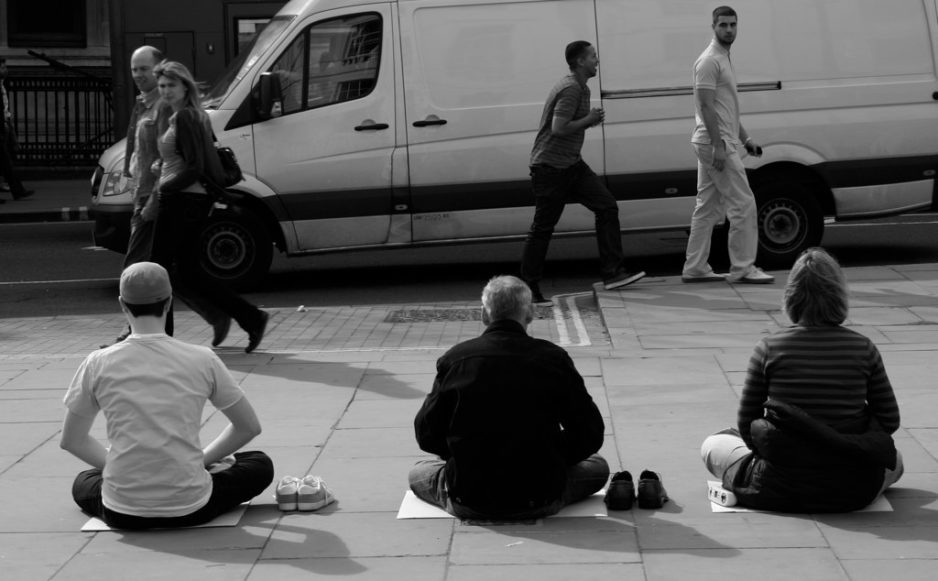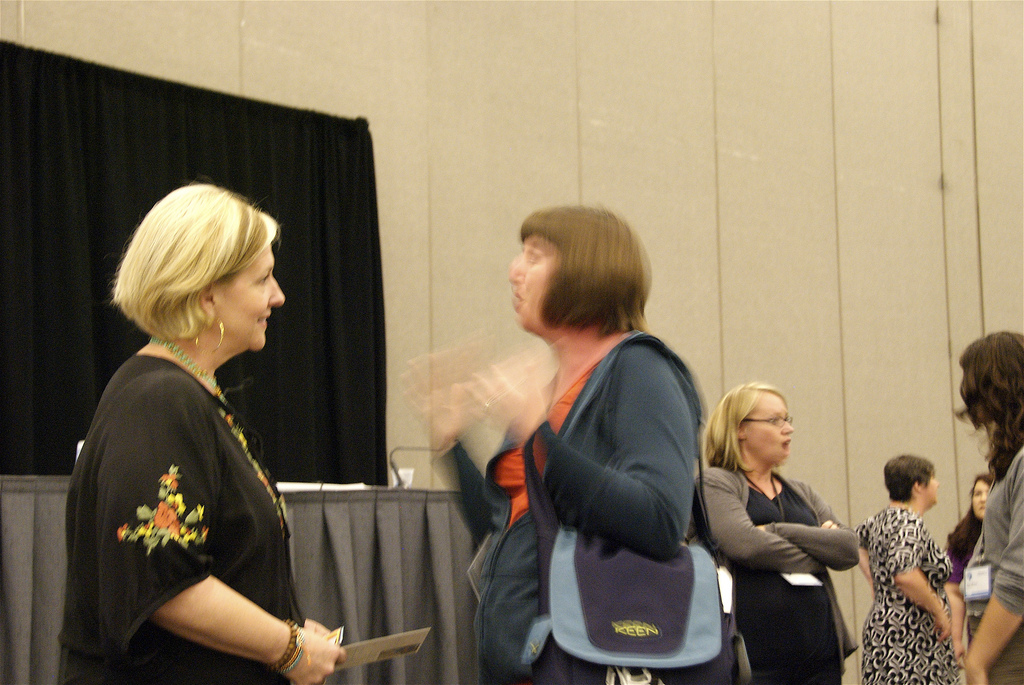My unproductive fight against numbness and depression, healthcare, meditation, and what I’m doing now.
President Obama’s healthcare speech tonight provided me the opportunity to write something I’ve been wanting to share for a bit. His guiding principle, that the cycle of increased-costs-to-decreased-value that the insurance companies have been subjecting the American people to needs to end. Insurance companies, like any other for-profit enterprise, are entitled to work toward as big of a profit as they can legitimately create for themselves, but not at the cost of the health of the entities they claim to be a resource for.
Beyond proposing putting restrictions on some of the processes insurance companies are able to use, the President suggested an alternative opportunity for insurance companies to make themselves available to patients: open the world of options to a wider audience than currently exists (e.g.currently uninsured people) and let customers make the choice where to invest their attention and dollars. By redefining the parameters to create a bigger world to play in, the overinflated balloon of suffering caused by the limitations of the day-to-day process can be deflated and replaced with a more workable and productive model, that ideally will find an equilibrium between stress points and air flow.
What does all of this have to do with me (and maybe you too)? Read on!
As some of you may or may not know, I’ve struggled on and off with chronic depression for most of my adult life. I have lived my last 15 years in a state of aversion, using any number of distractions (food, the internet, unhealthy relationships) in order to try to get out of my head, or not have my thoughts rule me.
I’ve never known what people meant when they said ‘stop thinking so much’. What other option is there? How does one interact with the world if not through one’s brain? I’ve been working in therapy for awhile now, trying to think my way out of this situation, which I’d defined as a sense of ‘coasting without connecting’, leading up to ‘not feeling like part of the world’. I thought I could figure out some way to stay in my head (which is the only place to be) but just nice-and-easy integrate my emotions back into my life.
All this came to a head last week when, in a “be careful what you wish for” epic fail moment, all the distractions I’d relied upon to not have to deal with myself suddenly stopped being effective in keeping me out of my brain, and I spiraled into a debilitating depression.
I stayed off of the internet, TV held no interest, I stopped eating altogether. I was desperately in search of an answer, something, ANYTHING that could be done to help me to figure out how to understand and escape my all-too-familiar situation. I didn’t know where the release valve on my suffering was, but I was at the end of my rope and willing to search anywhere for an escape hatch. Somehow in the midst of all this, the concept of meditation entered my brain.
I’ve been trying to learn how to meditate off and on for years, but I never really “got it”. It always seemed rather silly to me, how somehow sitting quietly could possibly solve my very real problems, challenges and self-imposed restrictions keeping me from being happy. It didn’t seem like DOING anything, and therefore it held no weight beyond a novelty. But now, in the desperate quest to find answers outside myself, I asked my Twitter folks for meditation resources, and was directed Radical Aceptance: Embracing Your Life with the Heart of a Buddha, which ended up being a life-altering discovery.
The book, written by Tara Brach, opened my eyes to the totally understandable habitual and very common folly of paying attention to the reptilian brain’s thought processes. Within these pages it is explained in plain language that the thoughts that I’d gotten completely caught up in are the automatic responses of our evolutionary fight-or-flight process. They are comprised entirely of judgments “this is good” “this is bad” “this is dangerous”. They are not rational, nor are they ‘intended’ to be. They are just the brain’s way of processing experience. The trouble happens when we begin to take these automatic responses at face value, when we begin to believe them.
I believed them. I got caught in them. I bought into the fundamental rational conclusion that one comes to when identifying with these thoughts: I’m not good enough. Something is wrong with me. I can never experience love or peace. I don’t deserve these things. And once I got caught in it, there was seemingly no escape.
It turns out, however, that you can’t think your way out of being caught up in thought. It seems simple when phrased like that, but as any of you who have been caught in depression know, when you’re in it there is no past where you felt better, there is no potential future where you can feel better, and it seems like the only way to get out is by some external source (said much better than I have here by Robert Burton in his The Anatomy of Melancholy, published in 1621.):
“When you are depressed, the past and the future are absorbed entirely by the present, as in the world of a three-year-old. You can neither remember feeling better nor imagine that you will feel better. Being upset, even profoundly upset, is a temporal experience, whereas depression is atemporal. Depression means that you have no point of view.”
The rallying cry of the depressed is “Save Me” for a reason.
I decided, as a last resort (before looking into a pharmacological option) to commit myself to investing in meditation. This resulted in probably the most intense weekend (three day weekend, no less) of my life thus far.
In my new-found “I’m going to give this a serious chance”, I discovered that Tara Brach has a free podcast where she expands upon her teachings from the Radical Acceptance book and leads her class in guided meditations (which are basically real-time audio or visual instruction guiding you through the process of becoming aware of your awareness and focusing on your core being rather than getting caught up in thoughts or emotions that are connected to automatic processes). Our consciousness is ‘prior’ to these processes. It’s closer to us.
I listened and learned and focused and tried it. And something finally clicked. This is the other option.
Finding myself sitting by the East River, eyes closed, listening to the sound of Tara’s soothing voice for hours at a time, I began to learn how to connect with my awareness, that which is more centrally ‘me’ than the thoughts, the emotions, the dread. Through these three days of intense change, I’ve gotten closer to becoming in sync with my core being than I’ve ever been, and learned that the way out is actually within us. I finally felt like I’d identified where the release valve was.
It was not easy. It did not come quickly. I’m lucky enough to have a Mom who went through something similar, and found similar release in the practice, and was able to offer invaluable information, advice and support.
Since then, I’ve been meditating for 20 minutes every morning. I’m beginning to feel the effects. I am able to get out of my head more quickly than before. I pay more attention to the world around me. I smile at people on the street, and get smiles back. I’m learning to ask questions when I’m unclear about something, rather than making assumptions that add to my stress level of a particular task at hand. Obviously I’m very new to this process and am still getting the hang of it.
What’s the point? Beyond my full and unreserved support for this practice (especially for my fellow geek friends who have similar challenges getting out of their own way), the point is, I’m learning to deflate the balloon. My balloon had expanded to the breaking point. It hit the wall. The only way out was to let go, let the balloon deflate, let it go slack, find another way to get the goal of living done. Change doesn’t come when we’re comfortable, it’s only in a crisis that change is possible. I’m tempted to make a comparison to business and social media trends here, but you’re all smart enough to get there yourselves, yes?
I haven’t been on Twitter (or blogging) quite as much, I’m a little different in how I interact with the world now, I’m learning to spend more time in the cool glow of presence and connection to the world. I’m figuring out what really matters to me (turns out, as with most people, it’s ‘connection’). I’m working on me. I’m figuring out how to work with my balloon to find equilibrium. I am.
Am I going to give up all my worldly possessions and go live on a monastery somewhere? Probably not. I’ve never been particularly religious, though I’ve always believed that you get what you give (i.e. Karma). The meditation practice does not require any particular religious belief, only a belief in our own primal nature, before thought, before emotion, and a commitment to loving kindness to all beings. There are plenty of resources on the web that can describe all this stuff in far greater detail, and I encourage exploration.
I hope this post will inspire any reader who finds themselves in a similar situation to consider this path as an option, and hope to continue being mindful as much as I can for as long as I can.
Thank you for listening, hearing and loving.
P.S. I realize that I addressed a bunch of this stuff in my “You Matter” post. I was considering revising it to take into account this new perspective, but I think its more interesting to be left alone as a ‘before and after’ study.







[…] out there on social networks (and the resulting increase in Twitter usage), to personal tragedy, to a shift in how I choose to treat my thoughts, to professional advancement, to finding love, I feel quite reinvented. Well, maybe reinvented […]
[…] this post was written before a follow-up called Deflating The Balloon: Addressing the fight against numbness and depression, which takes a significantly different approach. Although I think there is definitely some […]
Thx for sharing this Jeremy. Read it twice. It’s a great post. Brave, and also very wise.
First of all, the biggest hugs to you.
It’s very brave of you to share your experience with the world this way. You took the steps to make your life better and so many people struggle with that first step.
Though we’re just starting to get to know each other, I find I’m really very proud of you for acknowledging that you needed to do something AND that you got up and reached for what you need.
Thank you Jeremy.
Thx for sharing this Jeremy. Read it twice. It’s a great post. Brave, and also very wise.
First of all, the biggest hugs to you.
It’s very brave of you to share your experience with the world this way. You took the steps to make your life better and so many people struggle with that first step.
Though we’re just starting to get to know each other, I find I’m really very proud of you for acknowledging that you needed to do something AND that you got up and reached for what you need.
Thank you Jeremy.
Brave post, Jeremy. Thank you. I struggled for over 16 years with a panic disorder–different, of course, from depression, but equally anchored in the incessant spinning of the mind.
Interestingly, I, too, found my way out through Buddhist writings, which for some reason were able to frame the concept of quieting the mind in a way that no other approach had. Perhaps because that perspective on existence and life is so counterintuitively and mind-bendingly logical.
I’m no Buddhist (though it interests me greatly) and daily meditation has fallen by the wayside–though the panic has, too. But the phrase that has continued to stick with me is: “Whatever you give attention to grows stronger.”
Those seven words changed my life.